One year ago, my husband, son, and I were ushered into a plain room in the equivalent of a Chinese DMV office for a meeting that would forever change all our lives. Along with another family on the same journey as us and our English-speaking guide, we met our daughter for the first time.
The first time I saw her in person, she was on the hip of another woman—one whose job is to take care of orphans. A job that meant that she knew my child’s habits, personality, firsts, and more before I ever knew I had a daughter. This lady, and the others who worked with her, clocked in and out each day as the only caretakers my sweet girl knew. The tangible love of a parent was an unknown concept to our innocent toddler.
But God had other plans for her life…and changed mine in the process.
This is my first photo with both kids in a government office floor in Nanning, Guangxi, China. Neither of them were interested in the camera…
When we decided to adopt from China, I was completely naïve to all the things that go into parenting a child from a hard place. Sure, I knew that any kid who was eligible for adoption would have some traumatic things in their past. But to some degree I thought that a loving family would quickly heal that loss.
Luckily for everyone, our adoption agency did a great job of providing us with straightforward training on the effects of trauma on children. They provided details into many common consequences of neglect, malnourishment, group care settings, separation, and loss in early years. It was sobering and even had Nathan and I wondering if we made the right decision.
Because China was a special needs program, we knew that our child would have some sort of mild to moderate health issue. Though it may not be something we in the US typically consider under the special needs category, we had researched and decided what conditions we were comfortable taking on. Regardless of that need, we knew that attachment/bonding issues, speech and language delays, physical growth delays, and sensory processing issues were very common among children coming out of institutional care.
We completed our training, read books, joined groups, talked to been-there-done-that families, and prayed that God would prepare us to be the best parents for our future child. But just like none of the prep work for a biological child can prepare you for that first night at home with a new baby, nothing can truly get you ready for parenting your adopted child.
My life is so much richer, fuller, and more beautiful now that our L is home and blossoming. But this adoption journey has changed me in profound ways in the process and change is often difficult. I want to share our story so that I can remember how far we have come in the first year. In addition, I hope to be a resource for other families who are considering adoption, currently waiting, or recently home with a child through international adoption.
There are so many things I could talk about from the past year, but in the interest of time I’ll hit some highlights in major areas. I’ve also divided this post into two parts so be sure to check out part two in the coming days!
Medical Needs
China is a special needs program, so all children adopted from there have something in this category listed on their file. The specified medical need for L was low white blood cell count and anemia. Her paperwork was reviewed by our son’s pediatrician and an international adoption pediatrician. Both told us she seemed pretty healthy on paper.
The adoption pediatrician believed that the bloodwork levels were consistent with beta thalassemia minor, meaning that she carried the genetic trait for the blood disorder, but shouldn’t have any significant health problems except for mild anemia. This diagnosis was confirmed after L came home.
The photos of L we were given showed a bald spot on one side of her head, which our agency said could be the result of prolonged time lying in one area. I thought it was more than that, and both pediatricians agreed. Upon examination at home, and a visit with a pediatric dermatologist, the conclusion was that her scalp wasn’t fully formed at birth and the skin grew over it later. There are no hair follicles, so it will always be bald. But as a girl with thick hair, it should be easy to disguise.
We had two thorough, hours-long visits at the international adoption clinic at the University of Kentucky. They checked everything and sent us to a variety of specialists to confirm that any possible area of concern from the file was resolved. The initial file had a laundry list of somewhat scary conditions that were dealt with in an infant hospital stay. The adoption pediatrician made sure that all of these were followed up on.
L had major doctor anxiety after multiple excruciating blood draws, a kidney ultrasound, and catch-up immunizations. Our calendar had visits with pediatric hematologists, cardiologists, ENTs, ophthalmologists, and dermatologists. Her disdain for all of it peaked at an attempted EEG when she ripped off all the stickers, threw any attempt at distraction toys, screamed, and flailed until the nurses finally left her alone. Then she calmly gave a victorious wave goodbye as they left the room. (The cardiologist decided she demonstrated she was healthy enough to postpone that test after her display!)
All the visits and tests resulted in treatment for parasites, adding a multivitamin, confirmation of the beta thalassemia minor diagnosis, and glasses to hopefully correct a minor lazy eye. Unrelated to anything in her past, she ended up with a small cyst on her salivary gland that had to be removed in a minor outpatient surgery.
But that is it. Thankfully, the China medical records turned out to be accurate. I would never have dreamed she would be so healthy! We also overcame most of the doctor anxiety by playing with this toy medical kit and taking it with us to appointments.
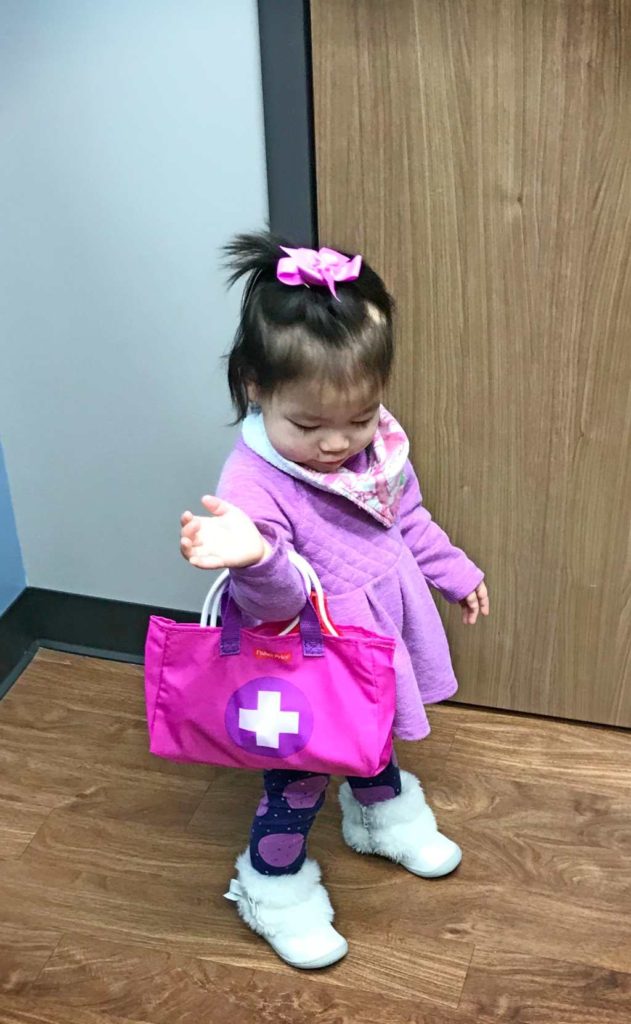
Playing with this doctor kit dramatically reduced her doctor anxiety. Plus she looks so cute carrying it to appointments!
Please know that many, many families have much more significant medical needs to deal with. Some of them are known before travel and others are discovered after arriving home. Even children with relatively minor conditions like cleft lip and palate require multiple surgeries. But we were absolutely thrilled with the findings of all the medical professionals involved in her care the past 12 months. Our girl is thriving and we are so thankful to have access to medical care for her.
Developmental Milestones
Of all the things we were educated about prior to the adoption, this is the area that I knew we were going to have delays in. As I mentioned, children from institutional care consistently have motor delays, speech/language delays, and sensory processing disorder. I thought I was prepared for these and was even more knowledgeable than the average parent on how to address them.
I worked for a few years as a family services director at a pediatric speech clinic and preschool, so I knew that with early intervention, children can make great strides. My son had been discharged from speech and occupational therapies after meeting his goals. I had guided multiple parents and friends through the process of getting services for their children and told them it was going to be okay. As both a parent and a professional, I had experience with pediatric intervention.
Yet this area has been the biggest surprise and challenge of life with L the past year. It is one thing to know your child will be behind in multiple areas due to spending much of her life in a crib with little interaction from adults. Lack of exposure to play, using multiple muscle groups, and even conversation will have consequences. But I think that my expectations for how quickly she would rebound once home were way off.
I thought that since there aren’t any cognitive reasons why she shouldn’t catch up, that getting her in an experience-rich environment and in appropriate therapeutic interventions would have her meeting milestones quickly. But my expectations were way more optimistic than reality.
Within the first month home, I contacted our state’s early intervention system for an evaluation (KY First Steps). She was evaluated in multiple areas, and even had a Mandarin-interpreter help with the language portion. Between 18-24 months, most kids have at least 10-20 words and are starting to put two words together. L had no English words and none detected in Mandarin.
You can see how her low tone affected sitting. This is L on Gotcha Day at 18 months old. She can’t sit up straight and has her legs wide for balance.
Her muscle tone was really low and she couldn’t really hold herself up straight to sit or be carried. She also couldn’t walk and her crawling and sitting were very wide and immature for her age. She also frequently threw tantrums when overwhelmed, banging her head on the floor, wall, or whatever was nearby with no warning. The number of knots and bruises she has given herself is too many to count.
Her attention span is short, her emotions are big, and she can’t express what frustrates her. She qualified for speech, physical, and occupational therapies through First Steps. But they only let you use six hours per month, so we opted for weekly speech therapy and biweekly occupational therapy. Then I added weekly private physical therapy at a pediatric outpatient clinic.
By the end of September 2017, she had taken her first steps! She’s now walking, running, riding toys she pulls with her legs, and has tons more strength than when we started. We’re working on jumping and building more muscles now, but are so impressed with how far she’s come.
In some of the sensory and self-regulation areas, she’ll make strides, then take a few steps backward. It must be so difficult to adjust to the sheer number of changes that have occurred in the span of a few months. We are adding additional private occupational therapy to address some of the concerns.
As for speech and language, I was shocked at how quickly she began understanding what we were saying! There were basic English words she responded to before we flew home from China and her receptive comprehension skyrocketed after we got home. But her expressive language is still very slow. She had really low oral motor strength, making it difficult to get her mouth move to make some sounds. L also has motor planning issues that affect her ability to produce the sounds she wants to say.
At the recommendation of the international adoption clinic, we also added private speech therapy at the six-month home mark. They felt like her progress in that area was still significantly behind.
If you are keeping count, that means five different therapists to balance in her schedule. They rarely all fall in the same week, but it is a lot for this mom to keep up with! I also try to incorporate all that I’m learning into her daily routine and play. (You can read about how I try to make play intentional here.)
All the hard work is paying off! L has dozens of words now, a few of which people other than her immediate family can understand. She is imitating sounds now and babbles a lot more. Teaching her a few signs has been a great tool. I do not know what we would have done without all the amazing pediatric therapists the past year. They have taught me how to work with her, and L thinks it is fun!
L has come a long way with her gross motor skills! Here she is trying to ride a tricycle at a kids’ event near our home.
But it is all a ton of work for everyone. We are making up for 18 months of precious development that were spent in an orphanage. Though I am so proud of her progress, I definitely underestimated the time and effort it would take to attempt to catch her up with her peers. We still have lots more work ahead of us and there could be areas where she struggles for a long time.
I say all of this only to prepare any of you considering adoption for the developmental side of this process. We were way more focused on the medical aspect of special needs and didn’t fully comprehend that way more of our time would be spent here.
Many of these therapies could be delivered in a daycare setting, but then we would be disconnected from what they were working on. After five months home, we decided that it was best for our family for me to quit my job so that I could focus more on her needs. (You can read about that decision here.) Every child and family situation is different, but we felt that it was the best way to give L the attention she needs right now.
This ends Part 1. Read on for Part 2!
You just finished the first part of my one-year post-adoption reflections. I have too many thoughts to contain them all to one post! Be sure to check out part two here! You can look back on our adoption journey here. For information on how to fund an adoption, there are great ideas on my Adoption Grants and Fundraising page. As always, I’d love to hear from you in the comments section below.
Books recommended for adoptive parents during our agency’s training through the National Council for Adoption:
The Connected Child: Bring Hope and Healing to Your Adoptive Family by Karen B. Purvis, David R. Cross, and Wendy Lyons Sunshine
With Eyes Wide Open: A Workbook for Parents Adopting International Children by Margi Miller and Nancy Ward
Parenting the Hurt Child: Helping Adoptive Families Heal and Grow by Gregory Keck and Regina Kupecky
Parenting Your Adopted Child: A Positive Approach to Building a Strong Family by Andrew Adesman, Christine Adamec, and Susan Caughman
Help for the Hopeless Child: A Guide for Families) by Ronald S. Federici
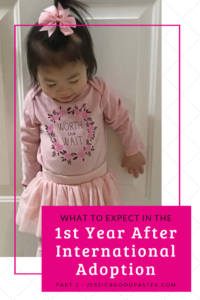
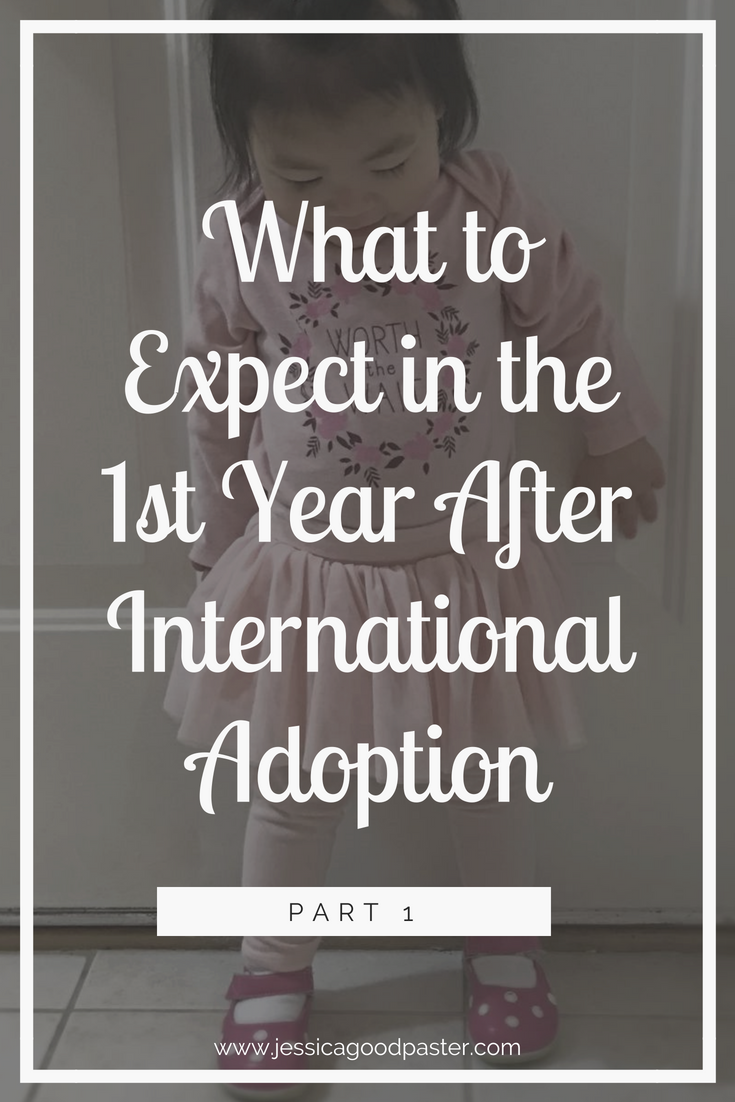
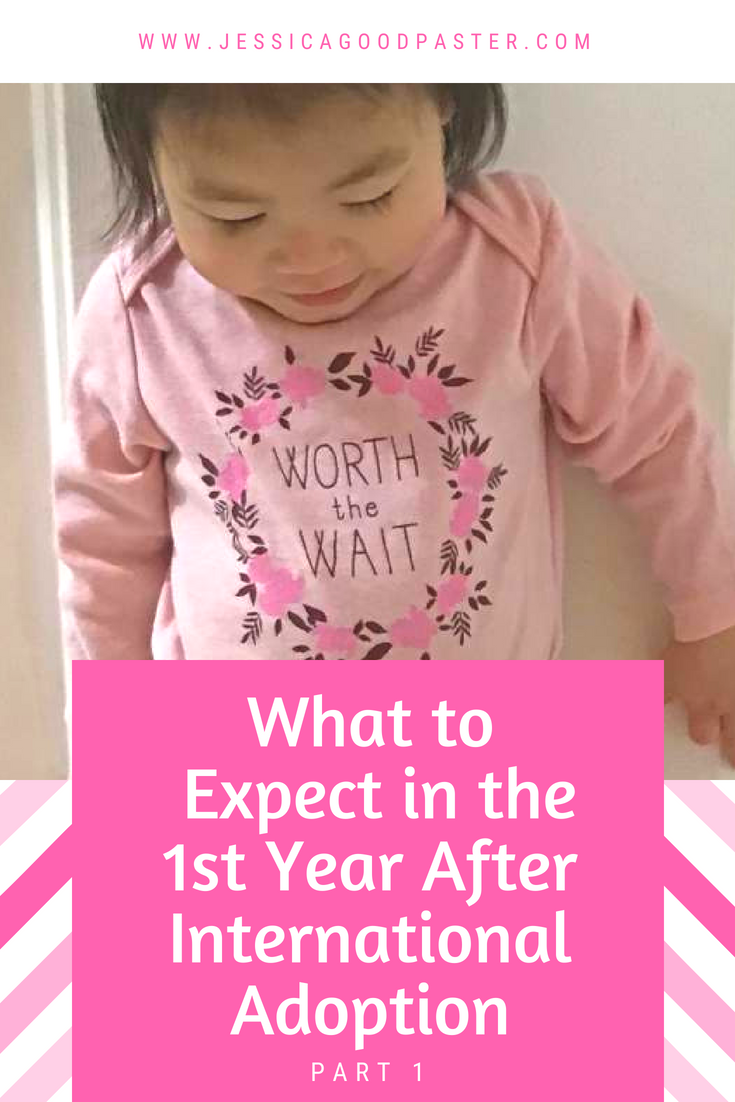
As an Amazon Associate I earn from qualifying purchases.
This post contains links to third party companies. I may receive a small commission if you purchase any of these items. Please know that I only recommend and endorse products that I think will be of value to my readers.

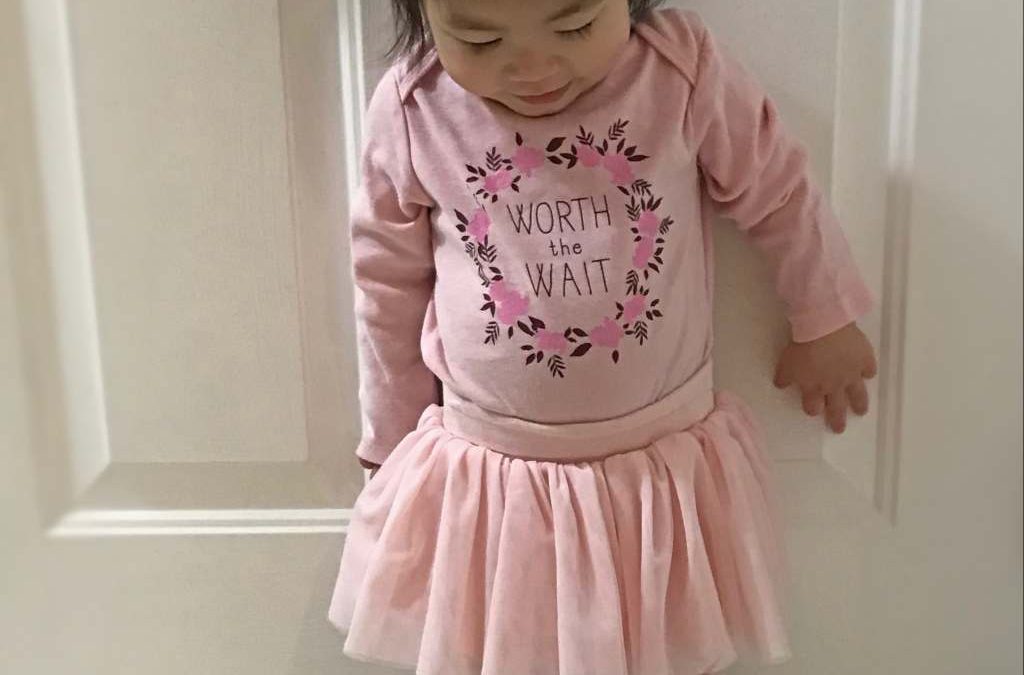
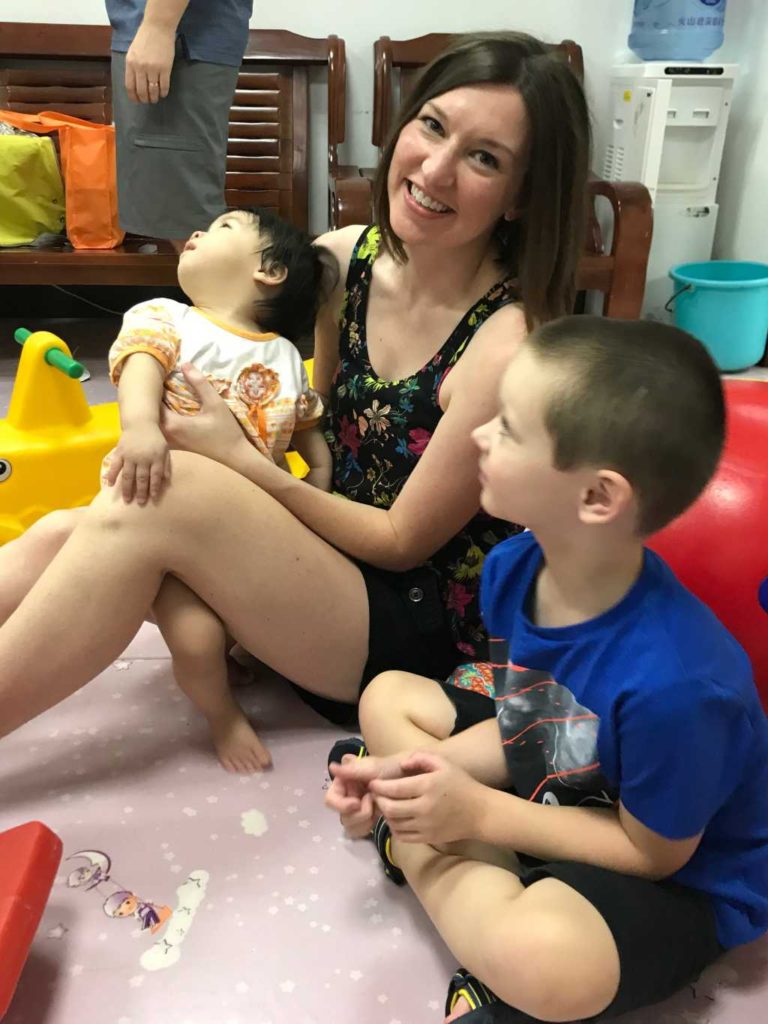
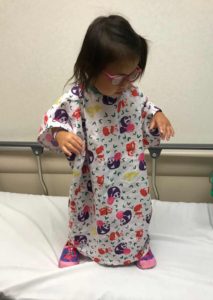
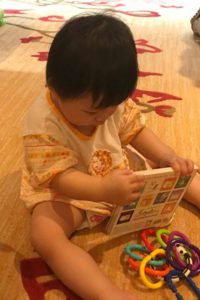
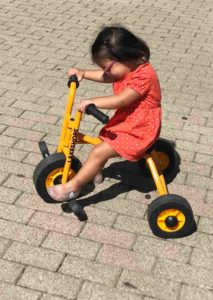

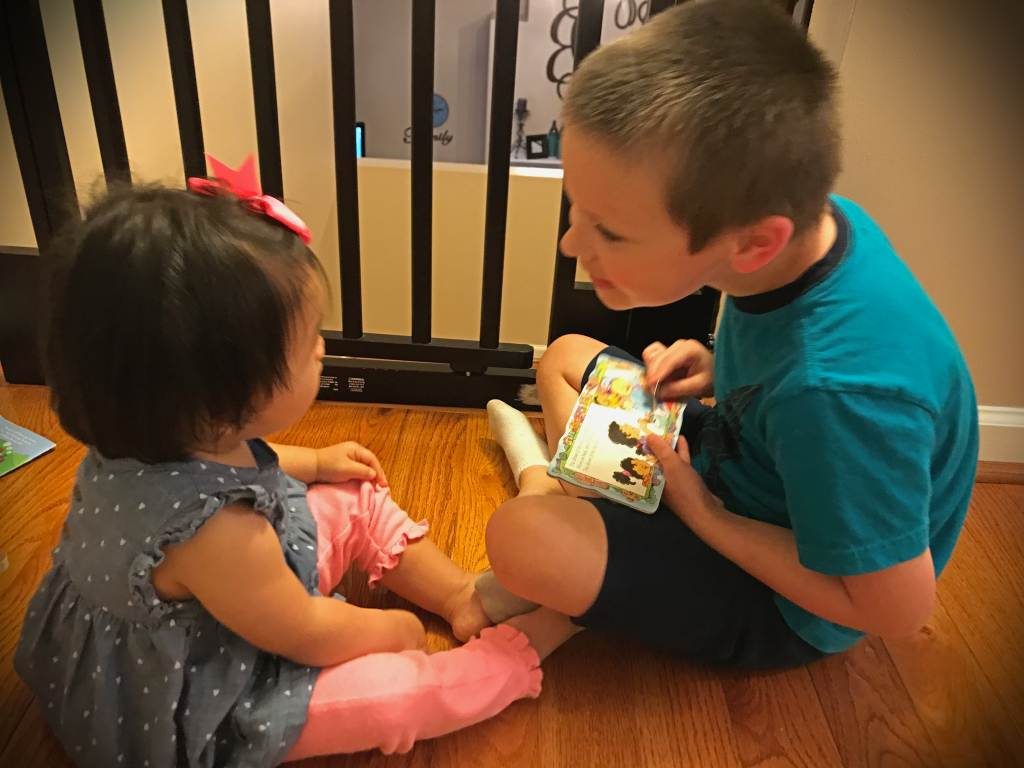

 Hi! I'm Jessica! I help people fund adoptions, navigate parenting, save money, and enjoy the good things in life.
Hi! I'm Jessica! I help people fund adoptions, navigate parenting, save money, and enjoy the good things in life. 
Good stuff, Jessica. Can’t wait to read part 2!
Thanks! Part 2 is now live and you can read it here: https://jessicagoodpaster.com/what-to-expect-in-the-first-year-after-international-adoption-part-2/!
I didn’t know that adoption from China was a special needs program. Thanks for sharing your journey.
It hasn’t always been a special needs program, but is now. The good news is that China is more open to domestic adoption than they were previously, so more kids have families in their home country.
OH my goodness this is such a heart warming read, I know a couple who is looking to adopt and I’ve shared your incredibly informative post. This was such a helpful read and what a beautiful experience and journey to go through <3
http://www.SHVETA.com
Thanks for reading! Please tell your friends to contact me if they have any questions. I’d be happy to help if I can!
Wow what an inspirational story! Thank you for sharing 🙂 it is good to learn and understand what people go through that adopt 🙂 blessings to you and your family!
I think this is really helpful and informative. I have a friend who just brought her son home from China last week. It is nice to now what she will be experiencing.
Please have her reach out to me if she has any questions! I’d be happy to help. Thanks for reading!
This really brought a tear to my eye I’m so happy for you thanks for sharing your journey.
Thanks for reading!